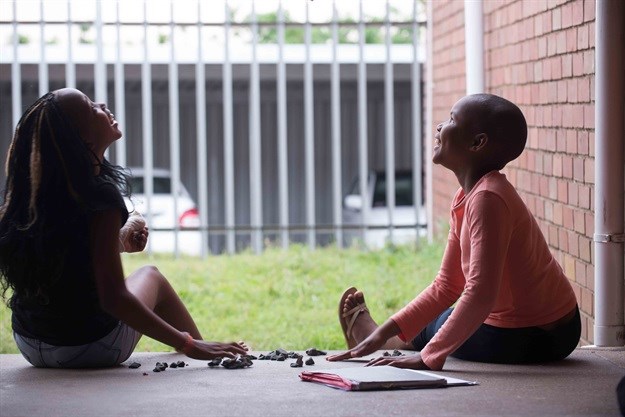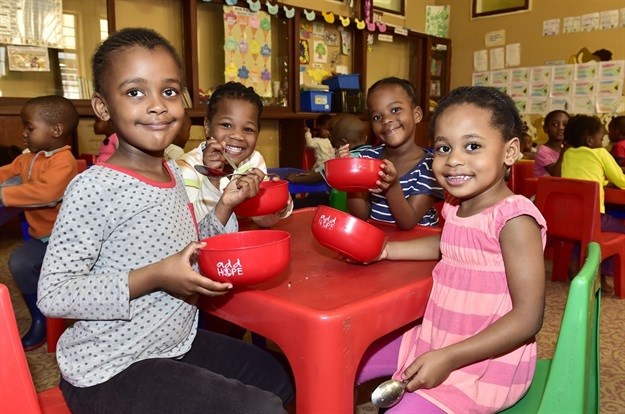We interviewed Thabisa Mkhwanazi, public affairs director for KFC Africa, to find out what makes the KFC Add Hope initiative so successful, how the brand motivates employee participation, and how potential beneficiaries can apply to join the programme.
Launched in 2009, how has the KFC Add Hope initiative evolved over the years to become sustainable?
Thabisa Mkhwanazi: We have grown consistently based on the structure and principles that were set up initially in terms of generating, managing and disbursing funds through carefully assessed beneficiary organisations.
Feeding 120,000 children requires a considerable amount of funding on an ongoing basis, money which we raise through customer donations added at the till or online, as well as our own corporate social responsibility contribution. Sustainable growth has been due to donations from our customers increasing every year, from R6.2m in 2010 to R38.6m in 2016, as well as continued increases in our own CSI contributions. Add Hope has donated R387m to date, 40% of which has come from our customers and 60% from KFC.
The distribution of the funds is carefully administered by the KFC Social Responsibility Trust. KFC has taken a partnership approach to ensure that every R2 donation reaches children in the most effective way, supporting sustainable feeding programmes at a growing list of 137 beneficiary organisations. We currently work with 12 larger, national beneficiaries, including JAM, Afrika Tikkun and SOS Children’s Villages, as well as 125 smaller organisations that are chosen by the teams at our restaurants so that they can have an impact in their local communities. The funds can only be used for feeding children from birth to 18, including on-site feeding and food parcels that are sent out to families. Beneficiaries, including childhood development organisations, children’s homes and school feeding programmes, are added every year.
How is the impact of the Add Hope initiative assessed in terms of the difference KFC is making on the ground?
Mkhwanazi: In a country where hunger and poor nutrition pose a major risk to the health, wellbeing and education of millions of children, initiatives like this are playing a vital role. We measure our success through the amount of children we are able to sustainably feed, enabling them to learn, grow and thrive. We currently feed 120,000 children around the country nutritious meals. With the help of our customers, we hope to continue to increase this number.
Why do you think the KFC Add Hope initiative is so successful?
Mkhwanazi: It has grown into a powerful partnership between our teams and our customers, uniting them in the fight against hunger. Add Hope has enabled a unique combination of CSI, enhanced by cause-related marketing that gives customers the option to donate, both focused on one vision – alleviating hunger so that children can learn, grow and thrive. Add Hope works because it’s a small donation that is quick to add. The R2 donations from customers, combined with our own contributions, all add up!
Add Hope has been carefully managed through a separate Add Hope Trust, which ensures every cent goes towards feeding. Marketing, administration and communication costs, for example, come from an entirely separate KFC budget.
Are KFC employees encouraged to get involved in KFC's CSR activities? If yes, how do you motivate participation?
Mkhwanazi: KFC teams at the tills play a key role in Add Hope. They’re on the front line, asking customers if they’d like to add a donation to their bill. Regular communications through the network show the impact of Add Hope, and those that work hard on fundraising are recognised through our award system.
In terms of structure, working with smaller organisations that are chosen by the teams at KFC restaurants, as well as national beneficiaries with multiple branches, ensures that our teams can see the impact in their local communities. Many KFC teams visit the local NGOs they support and build an extended relationship, getting involved at food gardens to enhance a school feeding scheme for example.
How do you drive customer awareness in terms of the difference their R2 donation makes?
Mkhwanazi: World Hunger Day on 28 May and World Hunger Month in October are key campaign points which we use to drive awareness of hunger issues in South Africa and highlight the impact of Add Hope through activations, in-store elements and media. This year, we used virtual reality 360° views of life at NGOs to show customers the impact of their donations. Our Hope Squad, made up of young beneficiaries of Add Hope, travelled to KFCs to immerse customers in this virtual world, and the videos are available online here. We were excited to raise R4.8m in customer donations during May, which the KFC contribution increased to R7.2m.
We actively communicate our Stories of Hope throughout the year online, across our social media platforms and through the media, showing the impact on young lives through personal success stories. Many KFC restaurants display pictures of the local feeding schemes and NGOs we support.
Media partners also kindly provide a considerable amount of added value space through digital advertising boards, print media and TV spots that drive awareness of Add Hope.
How do you evaluate the beneficiaries in terms of who receives support? How do interested, potential beneficiaries apply?
Mkhwanazi: We have an annual cycle of applications. A donation is provided for a 12-month period and current beneficiaries can re-apply for a donation annually using the form on our website. The donation should be used for feeding programmes directed at vulnerable and underprivileged children between the ages of 0-18 years. In motivated circumstances, an extension of a proposed feeding programme can include family food parcels. A proposed beneficiary must show that it has been in legitimate operation for more than two years, with a registered non-profit organisation certificate, a constitution, a board of management, a financial advisor, as well as an operational team. To show further proof of operations, management accounts, audited financials (if applicable) and a bank account of at least two years must be submitted with the application.
How important is it to align your CSR strategy with the brand and what are the benefits of doing so?
Mkhwanazi: Our CSR strategy is aligned to the global CSR framework of our parent company YUM! which drives commitments in four categories: our food, our people, our community and our environment. Key global priorities include:
- The health and nutritional needs of our customers,
- Feeding the world's hungry,
- Being responsible and intentional in our actions toward the sustainability of the environment and agricultural resources on which our business depends, and
- Building people capability in our associates around the world.
As a brand, KFC is about delicious food, sharing, family and having fun. We are authentic and honest, and we care about community. Food security remains a major issue in communities throughout South Africa. We’re proud that Add Hope, born in South Africa, is now being adopted by KFC in other countries as part of YUM! International’s focus on hunger relief.
The benefit of this clear alignment between our brand and CSR strategy is the global focus and support, being able to unite with our customers behind a very relevant cause, and the ability to effectively use our iconic brand status to contribute to society and tackle the world’s number one health risk – hunger.
What is KFC doing for Mandela Day this year, and what do you think is the significance of Mandela Day in 2017?
Mkhwanazi: Mandela Day represents the ethos that everyone can make a difference and create a better world for all who live in it. It is a day devoted to service, to improving the conditions in our own communities. This is truly relevant in South Africa where so many suffer in impoverished conditions. Children suffer the most, as malnutrition in their formative years means they miss the window of opportunity they have to reach their full development potential. Mandela Day reminds us that we can work together to break this cycle.
Through an Add Hope lens, our Mandela Day activities this year will show that we can make a difference. We are having a food can collection drive leading up to 18 July, forming a 700-can mural of Mandela’s face, and then dismantling this and packing nutritional meal boxes for our national partner JAM. Nationally, many of our KFC teams will be volunteering at the NGOs we support.

























